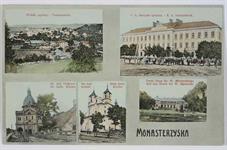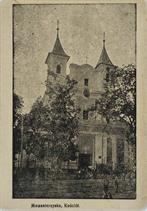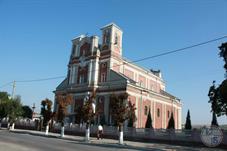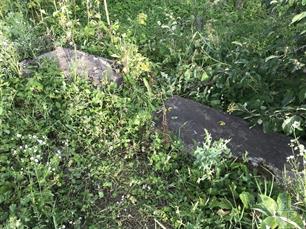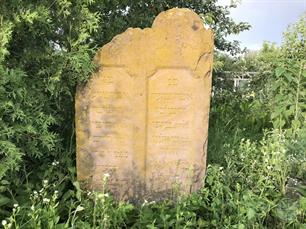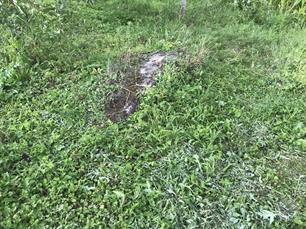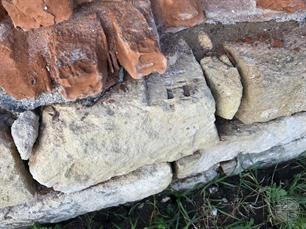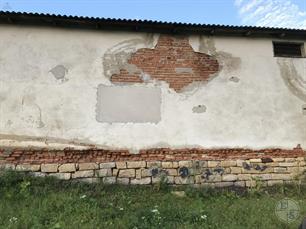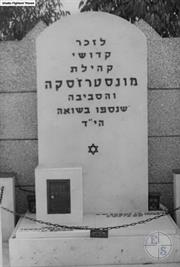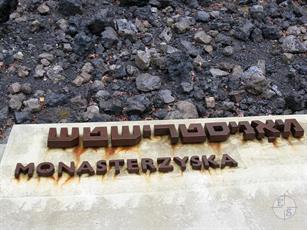Monastyryska
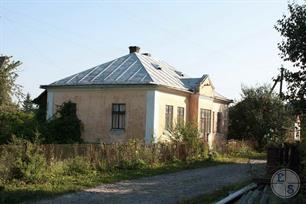 |
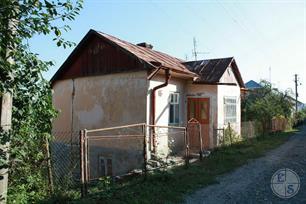 |
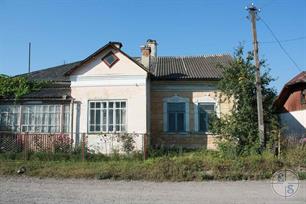 |
| Old Jewish houses near the synagogue | ||
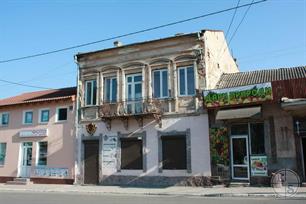 |
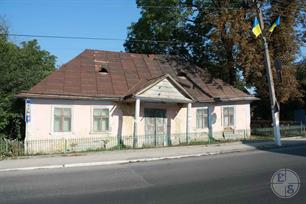 |
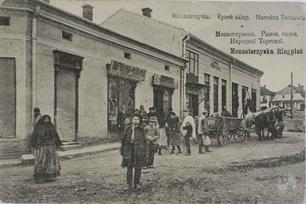 |
| In the center you can still see several houses end 19 - beginning 20 centuries | Postcard, beginning of 20th century |
The first written references are found in the documents of 1433 and 1437. as the property of the knight Sigismund.
In 1600, the construction of the castle ended. The city was indicated on the map of 1613. In 1621, the Tatars passed by Podolia, and the castle in Monastyryska was destroyed.
Since 1630 - the property of the Pototsky, who rebuilt the castle under the palace.
After the first section of the Commonwealth in 1772, the monastery and the surrounding villages became part of the Stanislavsky district of the Austrian Empire.
Under the owner of the city of the Italian nobleman, Karole Bako de Gette, the State Factory of Cigarettes and Tabaca (1797) and the Paper Factory (1864-1914) was built
In November 1918, the power of the West Ukrainian People’s Republicwas peacefully established in the city.
In July 1919, the Poles captured Monastyryska.
Since 1939 - as part of the Ukrainian SSR, from January 1940 to 2013 - the district center.
In 1600, the construction of the castle ended. The city was indicated on the map of 1613. In 1621, the Tatars passed by Podolia, and the castle in Monastyryska was destroyed.
Since 1630 - the property of the Pototsky, who rebuilt the castle under the palace.
After the first section of the Commonwealth in 1772, the monastery and the surrounding villages became part of the Stanislavsky district of the Austrian Empire.
Under the owner of the city of the Italian nobleman, Karole Bako de Gette, the State Factory of Cigarettes and Tabaca (1797) and the Paper Factory (1864-1914) was built
In November 1918, the power of the West Ukrainian People’s Republicwas peacefully established in the city.
In July 1919, the Poles captured Monastyryska.
Since 1939 - as part of the Ukrainian SSR, from January 1940 to 2013 - the district center.
Chortkiv district, Ternopil region
The first mention of the Jews of the Monastyryska dates back to 1625. In 1667, Jews participated in the defense of Monastyryska from Russian troops.
The first synagogue was built in mid 17th century, in mid 18th century there was a Jewish cemetery.
The rabbi of Monastyryska was Dovid-Tsvi Oyerbach, who founded his Hasid dynasty, then the dynasty was led by his son Nakhman-Zeev. Most of the Jews of Monastyryska were Hasidis.
In 1880, 2292 Jews (52.9%) lived in Monastyryska,
in 1900 - 2463 (53.2%),
in 1910 - 2041 (49.4%)
The first synagogue was built in mid 17th century, in mid 18th century there was a Jewish cemetery.
The rabbi of Monastyryska was Dovid-Tsvi Oyerbach, who founded his Hasid dynasty, then the dynasty was led by his son Nakhman-Zeev. Most of the Jews of Monastyryska were Hasidis.
In 1880, 2292 Jews (52.9%) lived in Monastyryska,
in 1900 - 2463 (53.2%),
in 1910 - 2041 (49.4%)
On July 4, 1941, troops of the Wehrmacht occupied Monastyryska. In August 1941, Judenrat was established, headed by Sh. Shapiro.
On August 10, 1941, 7 Jews were killed.
On March 24, 1942, Jews from Koropets were deported to Monastyryska, in June - from the surrounding villages.
On October 1942 about 1 thousand Jews were sent to the Belzhets death camp, several dozen were killed on the spot. The remaining Jews at the end of October 1942 were deported to Buchach.
After the liberation in 1944, about 20 Jews returned to Monastyryska. After 1945, on the site of two Jewish cemeteries squares were divided, a large synagogue was turned into a warehouse.
On August 10, 1941, 7 Jews were killed.
On March 24, 1942, Jews from Koropets were deported to Monastyryska, in June - from the surrounding villages.
On October 1942 about 1 thousand Jews were sent to the Belzhets death camp, several dozen were killed on the spot. The remaining Jews at the end of October 1942 were deported to Buchach.
After the liberation in 1944, about 20 Jews returned to Monastyryska. After 1945, on the site of two Jewish cemeteries squares were divided, a large synagogue was turned into a warehouse.
Since 1894, the Zionist organization operated.
The main affairs of Jews in 19 - beginning 20 centuries - crafts and trade. At the end of the 19th century Jews belonged to a pharmacy, 10 shops, 2 hairdressers, a shoe workshop and a workshop for sewing clothes; the Jewish cash desk of mutual assistance was organized.
In 1910 in Monastyryska operated 4 synagogues, a school, based in 1891 at the expense of Baron Hirsch, a school of Safa Brura network, founded in 1900.
In 1919, Jewish detachment, formed from the inhabitants of Buchach and Monastyryska, was a part of II Galician brigade.
In 1921, 1168 Jews lived in the city (39.3%),
in 1931 - 1488 Jews.
The main affairs of Jews in 19 - beginning 20 centuries - crafts and trade. At the end of the 19th century Jews belonged to a pharmacy, 10 shops, 2 hairdressers, a shoe workshop and a workshop for sewing clothes; the Jewish cash desk of mutual assistance was organized.
In 1910 in Monastyryska operated 4 synagogues, a school, based in 1891 at the expense of Baron Hirsch, a school of Safa Brura network, founded in 1900.
In 1919, Jewish detachment, formed from the inhabitants of Buchach and Monastyryska, was a part of II Galician brigade.
In 1921, 1168 Jews lived in the city (39.3%),
in 1931 - 1488 Jews.
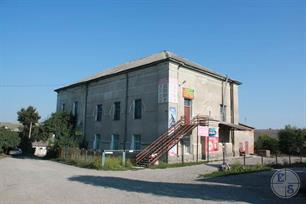 |
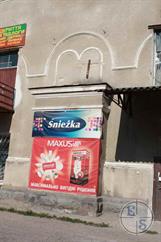 |
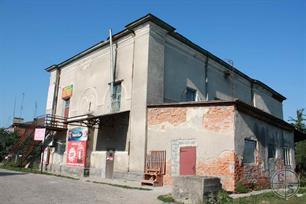 |
| Former synagogue on the corner of Franka and Pidgorodnya streets | Apse of Aron Kodesh | Traces of arched windows and symbolic tablets of the covenant are visible |
Sources:
- Jewish encyclopedia of Brockhaus & Efron
- Russian Jewish encyclopedia
Photo:
- Eugene Shnayder
- European Jewish Cemeteries Initiative. Monastyryska Old Jewish Cemetery
- Jewish encyclopedia of Brockhaus & Efron
- Russian Jewish encyclopedia
Photo:
- Eugene Shnayder
- European Jewish Cemeteries Initiative. Monastyryska Old Jewish Cemetery

- Home
- Shtetls
- Vinnytsia region
- Volyn region
- Dnipro region
- Donetsk region
- Zhytomyr region
- Zakarpattia region
- Zaporizhzhia region
- Ivano-Frankivsk region
- Kyiv region
- Kropyvnytskyi region
- Luhansk region
- Lviv region
- Mykolayiv region
- Odessa region
- Poltava region
- Rivne region
- Sumy region
- Ternopil region
- Kharkiv region
- Kherson region
- Khmelnytskyi region
- Chernihiv region
- Chernivtsi region
- Cherkasy region
- Crimea
- Synagogues
- Cemeteries
- Objects & guides
- Gallery
- History
- Contact
Jewish towns of Ukraine
Jewish towns of Ukraine
My shtetl
My shtetl
Donate
